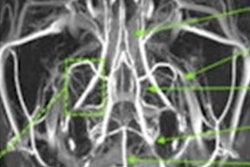Dear Advanced Visualization Insider,
ECR 2021 may not have been held in person in Vienna this year, but the virtual meeting certainly wasn't lacking in presentations on advanced visualization topics.
For example, a multicenter study led by researchers at imaging services provider RadNet described how deep learning-based image reconstruction software could boost utilization of quantitative volumetric MRI in routine clinical practice. The algorithm enabled 60% faster MRI scanning times while maintaining volumetric quantitative imaging accuracy and producing high image quality. You can get all the details in this edition's Insider Exclusive.
In other advanced visualization news from ECR, a team from the University of Pennsylvania detailed how machine-learning models were able to predict whether a CT-guided transthoracic biopsy will have complications and, if so, how severe they will be. Importantly, the models could also identify the technical procedural factors that most increased the risk, providing actionable information to improve the safety of these procedures.
Additionally, researchers are reporting success in applying advanced image analysis techniques in breast dynamic contrast-enhanced MRI (DCE-MRI) exams. Radiomics enabled noninvasive predictions of the risk of breast cancer recurrence, while in another study, an AI method that utilizes 4D data was deemed to be highly accurate for classifying breast lesions.
Also, researchers from the Harvey L. Neiman Health Policy Institute found that the percentage of radiologists performing lumbar puncture procedures has grown significantly over the last 14 years. With demand expected to increase in the coming years, both radiologists and nonradiologists must be prepared to fill this growing clinical void, according to the authors.
In other developments, 3D CT mummy imaging has offered some fresh clues about the death of a pharaoh in ancient Egypt, helping scientists to decipher how he was killed. Meanwhile, virtual 3D models created from CT data can be utilized for surgical planning and to provide patient-specific treatments for complex acetabular fractures. AI can also assess dislocation risk and measure acetabular component angles after hip arthroplasty.
3D-printed surgical guides were recently judged to be useful in guiding breast conservation therapy in breast cancer patients after neoadjuvant systemic therapy. Finally, radiomics analysis of coronary CT angiography exams has shown that cardiovascular risk factors such as cocaine use and HIV status affect development of atherosclerosis in different ways.
Is there a story you'd like to see covered in the Advanced Visualization Community? Please feel free to drop me a line.




















